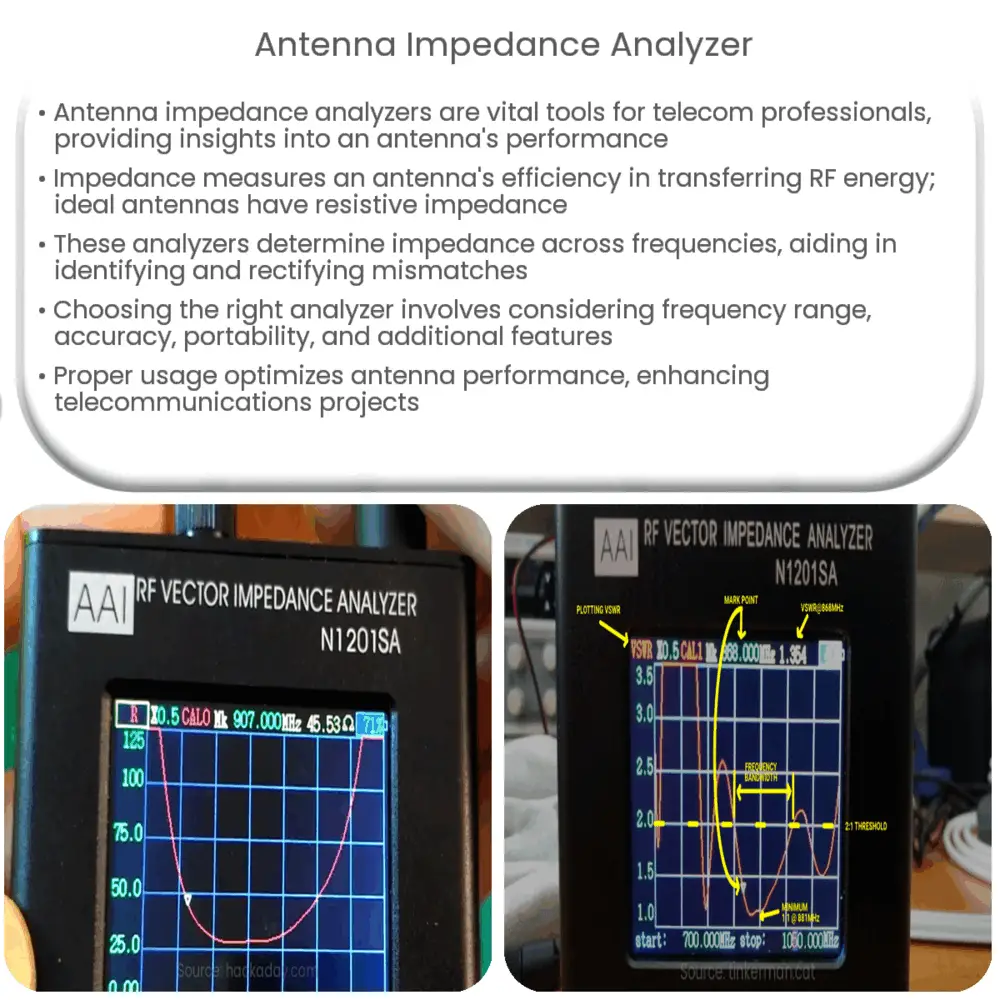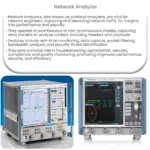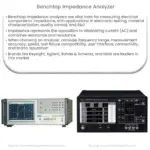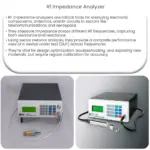Antenna impedance analyzers measure and optimize antenna performance, enabling efficient signal transmission across various frequencies.

Antenna Impedance Analyzer: A Comprehensive Guide
Introduction
Antenna impedance analyzers are essential tools for radio amateurs, engineers, and professionals working in the field of telecommunications. These devices provide valuable insights into an antenna’s performance, ensuring that it operates optimally and efficiently. In this article, we will discuss the basics of antenna impedance analyzers, their importance in antenna design, and the factors to consider when selecting one.
Understanding Antenna Impedance
Impedance is a fundamental concept in electrical engineering that characterizes the opposition of a circuit to alternating current (AC). Antenna impedance, specifically, refers to the combination of resistance and reactance exhibited by an antenna when subjected to an AC signal. In simpler terms, it is a measure of how effectively an antenna can transfer radio frequency (RF) energy between the transmitter and the free space.
An ideal antenna would have a purely resistive impedance, which would perfectly match the impedance of the transmission line and the transmitter. However, in practice, antennas exhibit some reactance, leading to a mismatch between the antenna and the transmitter. This mismatch can result in reduced efficiency and signal loss, making impedance analysis critical for ensuring optimal antenna performance.
Role of Antenna Impedance Analyzers
Antenna impedance analyzers are specialized devices designed to measure the impedance of antennas at various frequencies. These instruments help users identify and rectify impedance mismatches, ultimately improving antenna efficiency and signal strength. Some of the key functions of antenna impedance analyzers include:
- Measuring impedance: By injecting a known signal into the antenna and measuring the voltage and current response, impedance analyzers can accurately determine the antenna’s impedance at a given frequency.
- Characterizing the antenna’s frequency response: Antenna impedance analyzers can sweep across a range of frequencies, providing a complete picture of the antenna’s impedance characteristics over its intended operating range.
- Identifying and rectifying issues: Using the information gathered from impedance measurements, users can identify issues such as poor impedance matching and take corrective action, such as adjusting the antenna’s length or adding impedance-matching components.
Selecting the Right Antenna Impedance Analyzer
With numerous antenna impedance analyzers available on the market, selecting the right one for your needs can be a challenging task. Here are some factors to consider when choosing an antenna impedance analyzer:
- Frequency range: Ensure that the analyzer covers the frequency range of interest, typically encompassing the operating frequencies of the antenna under test.
- Accuracy and resolution: The analyzer should provide accurate and precise impedance measurements to facilitate effective antenna tuning and optimization.
- Portability: For field applications, a portable and battery-operated analyzer can be more convenient than a larger, benchtop model.
- Additional features: Some analyzers offer advanced features, such as graphical displays, built-in vector network analyzers, and PC connectivity, which can enhance the user experience and improve diagnostic capabilities.
Popular Antenna Impedance Analyzer Models
Several manufacturers offer antenna impedance analyzers, each with unique features and capabilities. Here are some popular models to consider:
- RigExpert AA-series: The RigExpert AA-series provides a comprehensive range of handheld analyzers, covering frequencies from 0.1 to 1400 MHz. These analyzers offer a graphical display of impedance characteristics and include features such as a TDR (Time Domain Reflectometer) and PC connectivity.
- MFJ-259/269 series: The MFJ-259/269 series of antenna analyzers are popular among radio amateurs for their versatility and affordability. These analyzers cover frequency ranges from 1.8 to 170 MHz or 415 to 470 MHz, depending on the model, and provide essential impedance measurement features.
- miniVNA Tiny: The miniVNA Tiny is a compact vector network analyzer and antenna analyzer combined into one device. Covering a frequency range of 1 to 3000 MHz, it offers advanced features such as PC connectivity, Bluetooth support, and high dynamic range, making it suitable for professional applications.
Using an Antenna Impedance Analyzer
Once you have selected an appropriate antenna impedance analyzer, you can follow these steps to evaluate your antenna:
- Connect the analyzer to the antenna: Attach the analyzer to the antenna feed point or the transmission line using a suitable coaxial cable.
- Power on the analyzer and select the desired frequency range: Follow the manufacturer’s instructions to turn on the device and set the desired frequency range for analysis.
- Observe the impedance measurements: The analyzer will display the impedance measurements, typically as a combination of resistance (R) and reactance (X) values or as a complex impedance value (Z).
- Analyze the results: Compare the measured impedance values to the desired or expected values for your antenna. Identify any deviations or mismatches that may require corrective action.
- Make adjustments if necessary: If the impedance measurements reveal issues such as poor impedance matching, adjust the antenna length, add impedance-matching components, or modify the antenna design to achieve better performance.
- Repeat the process as needed: Continue analyzing and adjusting your antenna until the desired impedance characteristics are achieved, ensuring optimal performance.
Conclusion
Antenna impedance analyzers are invaluable tools for optimizing antenna performance and ensuring efficient signal transmission. By understanding the importance of antenna impedance and selecting the right analyzer for your needs, you can improve the performance of your antenna system and achieve better overall results in your telecommunications projects.




